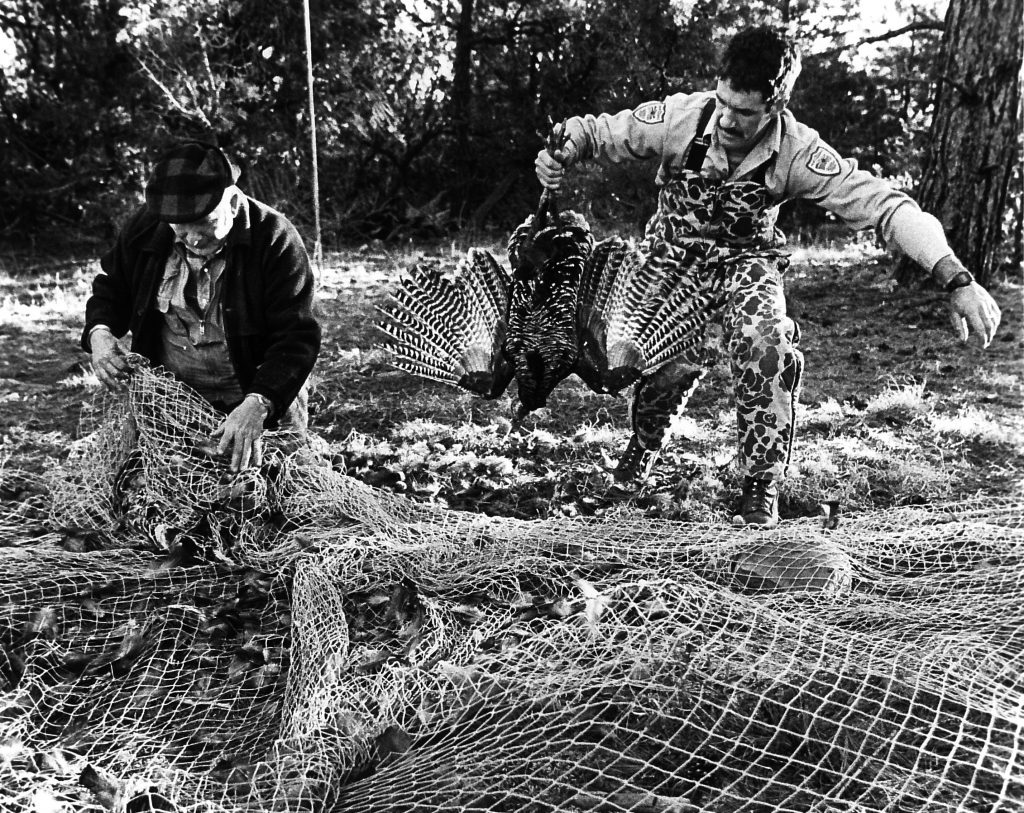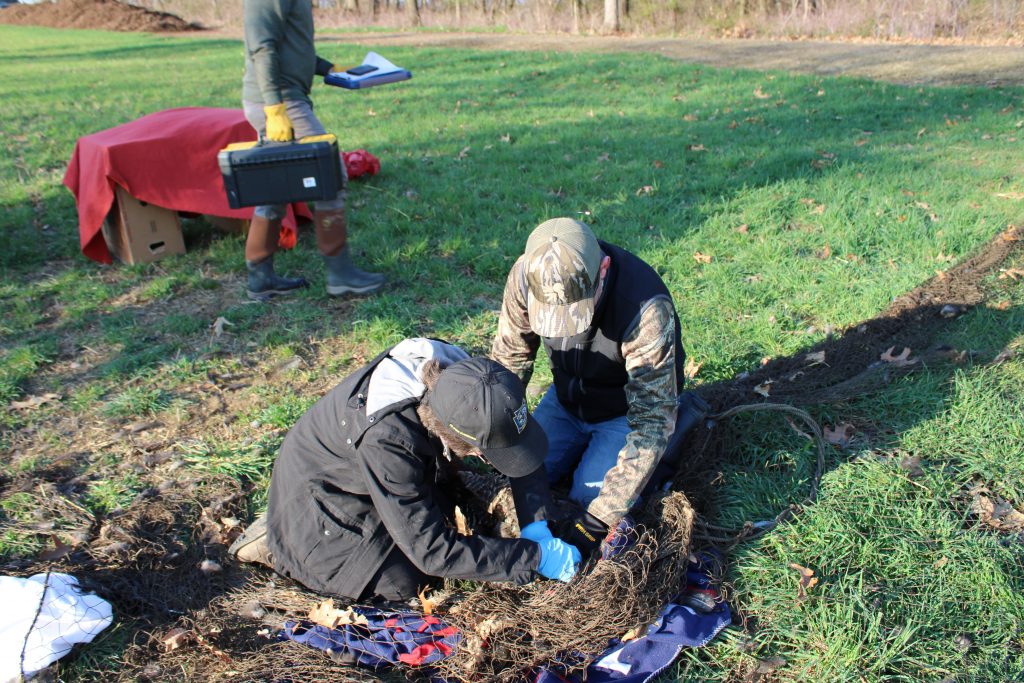NWTF’s RFP Program: How it Works and What’s Next
As the NWTF opens its National Request for Proposals Program for the third year, many may wonder, “What is this program, and how is it conserving wild turkeys?”
Thanks to support from dedicated partners — such as the Bass Pro Shops and Cabela’s Outdoor Fund, Mossy Oak and NWTF state chapters — the RFP program is an aggressive, annual effort to fund critical wild turkey research projects nationwide.
While wild turkey research is an in-demand topic right now (and rightfully so), the NWTF was founded as a wild turkey research organization and has contributed to research efforts since the 1970s.
Efforts to restore the wild turkey population were as invigorated as they had ever been by the 1970s, including the optimization of the rocket net, trap and transfer programs, habitat enhancement projects and an overall passion to conserve the wild turkey. However, there were concerns with respect to how long the success could continue and whether full recovery to historic levels was possible, given increasing human development and habitat loss.
To help address these issues and to help fund essential scientific research, one of the NWTF’s first innovations was to create the Wild Turkey Technical Committee in 1975 and fund its first research project, which was issued in 1977 for $2,900 (about $15,000 in 2024). The funding was provided to Bill Healy, Ph.D., of the USDA Forest Service for research on wild turkey reproduction and poult survival, movements and habitat selection. Forty-six years later, the NWTF and the Wild Turkey Technical Committee are still at work.

Since that 1977 investment, the NWTF has invested nearly $10 million into wild turkey research.
"Between 2022 and 2023, the NWTF and its state chapters invested over $1.2 million into wild turkey research,” said NWTF co-CEO Kurt Dyroff. “We plan to continue this heightened emphasis in critical wild turkey research that helps us answer some of the dynamic questions around declines and potentially challenge many longstanding assumptions that we have made about the bird. We are taking the results from this research and applying it into our habitat work, management recommendations and policy efforts; this is benefitting the wild turkey today and tomorrow.”
Turning the Tides

A lot has happened since the 1970s; the restoration of our favorite bird hit an all-time high in the late 1990s and the early 2000s. Legal turkey hunting was more widely available across the country than it ever was. Those opportunities still exist today, but we must work to ensure their sustainability.
The wild turkey population is, again, in decline or unstable in certain areas across the country. Couple that with ongoing habitat loss, new disease prevalence and the need for a better understanding of hunting season frameworks, and we arrive in the 2020s – a period that, if we do our job, future generations will credit with preventing a national wild turkey decline.
A leading landscape-scale approach to this effort is the NWTF’s RFP program.
RFP, or request for proposals, was a term used internally by NWTF conservation staff. But in 2022, NWTF conservation leadership envisioned a public-facing program that could be implemented year after year. This program would allow the organization’s members and the entire outdoors community to see the significant investments being made into addressing the most pressing concerns around wild turkey management and the overall sustainability of the bird.
As the NWTF orchestrated an aggressive action plan to focus on wild turkey research, and as the RFP program became a public-facing program, the NWTF invested over $360,000 in 2022; over $580,000 in 2023; and another historic investment is on the horizon in 2024 through the program.
The program works by pooling resources from dedicated partners, such as from the Bass Pro Shops and Cabela’s Outdoor Fund, investments from Mossy Oak and the many NWTF state chapters that take a landscape-scale approach.
After funding is secured, the NWTF announces the RFP to universities, state and federal agencies and broader conservation partners that the program is open and requests projects for potential funding. Universities and agencies that are conducting wild turkey research projects submit their proposals to the NWTF to be considered for funding.
Projects are compiled, ranked and scored by NWTF conservation leadership and the NWTF Technical Committee. The cross-branch partnership among wild turkey biologists, researchers and agency leadership allows for an expert-level, non-biased approach to scoring and ranking the projects on their scientific rigor, partner engagement, secured matching funds and the applicability of each project toward NWTF’s key areas of emphasis.
Key areas of emphasis for the NWTF include everything from developing regional and national population estimates to evaluating and developing habitat management practices that would increase turkey nest success and poult survival.
After projects have been scored and ranked, the NWTF allocates the funds it pooled together from its partners, NWTF state chapters and national fundraising efforts to research projects based on how well they scored in regard to the above criteria.
“There is more wild turkey research happening across the country at a single time than ever before because it is needed more than ever before,” said Mark Hatfield, NWTF national director of science and planning. “We must ensure that research-derived wild turkey management practices are at the core of state management efforts. Generations of researchers, biologists and wildlife managers have dedicated their lives to the wild turkey. We owe it to them and future generations that we do the same.”
As the NWTF’s RFP program looks to make its third historic investment in wild turkey research this year as a public-facing effort, it is essential to note that it would not be possible without the many people who revere this magnificent bird and make the RFP program possible, from the NWTF’s dedicated partners to the researchers in the field.
CONNECT WITH US
National Wild Turkey Federation
770 Augusta Road, Edgefield, SC 29824
(800) 843-6983
National Wild Turkey Federation. All rights reserved.
